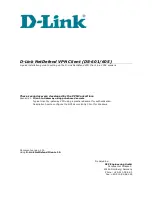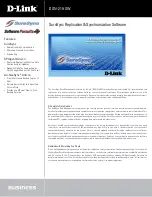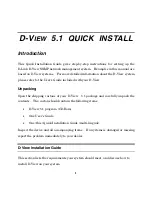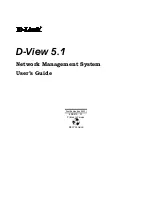
Configuring the Location Table
8-8
PortMaster Configuration Guide
Setting the Dial Group
Dial groups associate locations with specific dial-out ports. By default, all ports and
locations belong to dial group 0 (zero). You can configure locations and ports into dial
groups numbered from 0 to 99. Dial group numbers can be used to reserve ports for
dial-out to specific locations, or to differentiate among different types of modems that
are compatible with the remote location.
The dial group associated with a location works with the dial group specified for each
port. For example, you create a dial-out location called
home
and specify that the dial
group for
home
is 2. When you configure each port, you can assign the port to a dial
group. Only ports assigned to group 2 will be used to dial the location
home
, while other
ports will not.
To associate a location with a dial group number, use the following command:
Command>
set location
Locname
group
Group
Setting the MTU Size
The maximum transmission unit (MTU) defines the largest frame or packet that can be
sent through this port, without fragmentation. If an IP packet exceeds the specified
MTU, it is automatically fragmented. An IPX packet that exceeds the specified MTU is
automatically dropped. PPP connections can have a maximum MTU of 1500 bytes. SLIP
connections can have a maximum MTU of 1006 bytes. With PPP, the PortMaster can
negotiate smaller MTUs when requested during PPP negotiation.
The MTU is typically set to the maximum allowed for the protocol being used. However,
smaller MTU values can improve performance for interactive sessions. During PPP
negotiation, the smaller number is used. If you are using IPX, the MTU should be set to
at least 600.
To set the MTU for a location, use the following command:
Command>
set location
Locname
mtu
MTU
Configuring Compression
Compression of TCP/IP headers can increase the performance of interactive TCP sessions
over network hardwired asynchronous lines. Lucent implements Van Jacobson TCP/IP
header compression and Stac LZS data compression. Compression is on by default.
Summary of Contents for PortMaster
Page 16: ...Contents xvi Configuration Guide for PortMaster Products...
Page 26: ...Subscribing to PortMaster Mailing Lists xxvi PortMaster Configuration Guide...
Page 32: ...Basic Configuration Steps 1 6 PortMaster Configuration Guide...
Page 114: ...Configuring WAN Port Settings 6 12 PortMaster Configuration Guide...
Page 128: ...Configuring Login Users 7 14 PortMaster Configuration Guide...
Page 158: ...Restricting User Access 9 16 PortMaster Configuration Guide...
Page 168: ...Configuring Ports for Modem Use 10 10 PortMaster Configuration Guide...
Page 222: ...Frame Relay Subinterfaces 13 16 PortMaster Configuration Guide...
Page 236: ...Troubleshooting a Synchronous V 25bis Connection 14 14 PortMaster Configuration Guide...
Page 252: ...Using ISDN for On Demand Connections 15 16 PortMaster Configuration Guide...
Page 264: ...Using ISDN for Internet Connections 16 12 PortMaster Configuration Guide...
Page 276: ...Configuration Steps for Dial In Access 17 12 PortMaster Configuration Guide...
Page 286: ...Configuration Steps for Shared Device Access 18 10 PortMaster Configuration Guide...
Page 296: ...Troubleshooting a Leased Line Connection 19 10 PortMaster Configuration Guide...
Page 310: ...B 4 PortMaster Configuration Guide...
Page 352: ...Command Index Command Index 6 PortMaster Configuration Guide...
















































